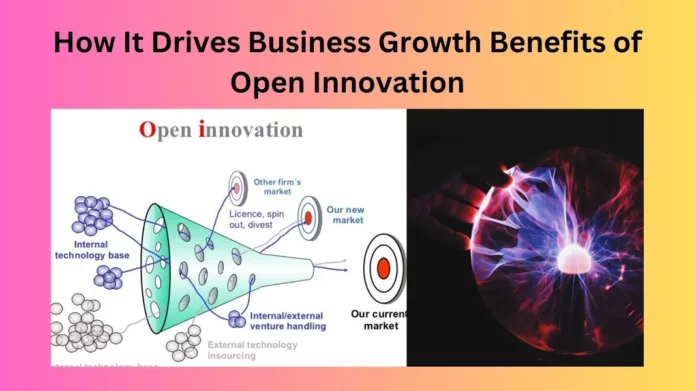In today’s hyper-competitive business landscape, innovation isn’t just a buzzword; it’s a lifeline for companies striving to stay ahead of the curve. Among the various innovation strategies, open innovation has emerged as a game-changer, revolutionizing the way businesses create and leverage new ideas. In this article, we’ll delve into the world of open innovation and explore how it drives business growth by unlocking a myriad of benefits.
1. What is Open Innovation?
At its core, open innovation is a collaborative approach that involves seeking external ideas, technologies, and pathways to complement internal capabilities. Unlike traditional closed innovation, where companies rely solely on their internal R&D departments for innovation, open innovation encourages firms to tap into the vast pool of external knowledge and expertise.
2. Embracing Diversity of Thought
One of the key advantages of open innovation lies in its ability to foster diversity of thought. By engaging with a diverse network of partners, including customers, suppliers, and even competitors, companies can gain fresh perspectives and insights that may have otherwise been overlooked. This diversity fuels creativity and drives breakthrough innovations, giving businesses a competitive edge in the market.
3. Accelerated Time-to-Market
In today’s fast-paced business environment, speed is of the essence. Open innovation enables companies to expedite the innovation process by leveraging external resources and expertise. By collaborating with external partners, businesses can access ready-made solutions, cutting down on development time and accelerating time-to-market for new products and services.
4. Cost-Efficiency and Risk Mitigation
Traditional R&D can be a costly and risky endeavor, with no guarantee of success. Open innovation offers a more cost-effective and risk-averse approach by spreading the investment and risk across multiple stakeholders. By sharing resources, knowledge, and costs with external partners, companies can reduce the financial burden associated with innovation while mitigating the inherent risks.
5. Tap into Global Talent Pool
In today’s interconnected world, innovation knows no boundaries. Open innovation allows companies to tap into a global talent pool, accessing expertise and insights from around the world. Whether it’s collaborating with research institutions in Silicon Valley or partnering with startups in emerging markets, businesses can harness the collective intelligence of the global community to drive innovation and growth.
6. Enhanced Flexibility and Adaptability
Innovation is not a one-time event; it’s an ongoing process that requires adaptability and flexibility. Open innovation provides companies with the flexibility to adapt to changing market dynamics and customer needs. By continuously seeking out new ideas and opportunities, businesses can stay agile and responsive in the face of uncertainty, ensuring long-term success and sustainability.
7. Cultivating a Culture of Innovation
At its essence, open innovation is not just a strategy; it’s a mindset. By embracing open innovation, companies can cultivate a culture of innovation within their organizations, where creativity and collaboration are valued and encouraged. This cultural shift fosters an environment where employees feel empowered to explore new ideas and take calculated risks, driving continuous improvement and growth.
Conclusion
In conclusion, open innovation is a powerful driver of business growth, offering a host of benefits ranging from accelerated time-to-market and cost-efficiency to enhanced flexibility and adaptability. By embracing a collaborative approach and tapping into external knowledge and expertise, companies can unlock new opportunities for innovation and stay ahead of the competition in today’s dynamic marketplace.
FAQs
1. What industries can benefit from open innovation?
Open innovation is applicable across various industries, including technology, healthcare, manufacturing, and consumer goods. Any industry that values creativity, collaboration, and continuous improvement can benefit from adopting an open innovation approach.
2. How can companies foster a culture of open innovation?
Fostering a culture of open innovation requires leadership buy-in, clear communication, and incentives for collaboration. Companies can encourage employees to share ideas, collaborate across departments, and recognize and reward innovative contributions.
3. Are there any risks associated with open innovation?
While open innovation offers numerous benefits, it also comes with its own set of risks, including intellectual property concerns, loss of competitive advantage, and potential conflicts of interest. Companies must carefully manage these risks through proper governance, confidentiality agreements, and strategic partnerships.
4. Can small businesses benefit from open innovation?
Absolutely! Open innovation is not just for large corporations; small businesses can also leverage external partnerships and collaboration to drive innovation and growth. By tapping into the expertise of industry networks, academia, and startup ecosystems, small businesses can access resources and insights that may be beyond their internal capabilities.
5. How does open innovation differ from traditional R&D?
Traditional R&D is typically conducted in-house, with a focus on developing proprietary technologies and products. In contrast, open innovation involves collaborating with external partners to co-create and co-develop solutions. It emphasizes sharing knowledge, resources, and risks to drive innovation more efficiently and effectively.















